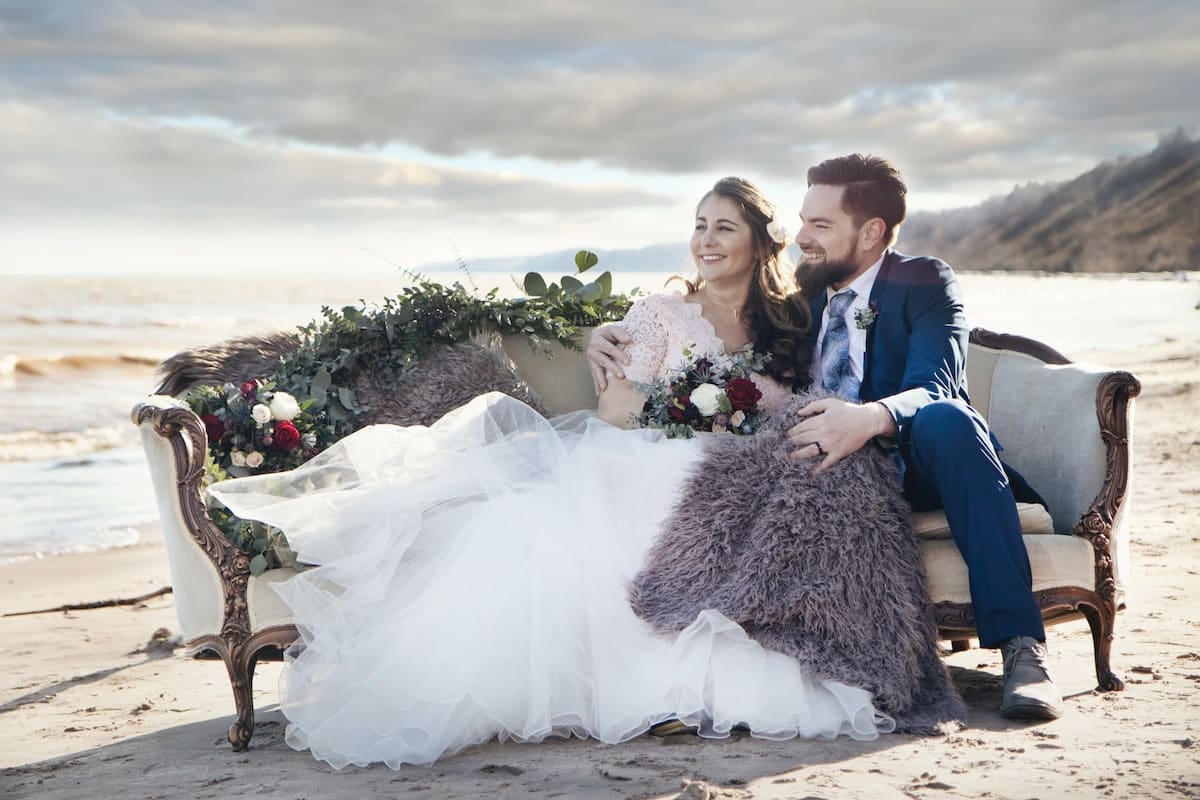Table of Contents
You’ve probably heard terms like “highlight”, “cinematic”, “portrait”, and “documentary” when researching wedding videography. Choosing between styles can be hard, or even knowing what each term means. No worries. Our handy guide will help you understand the differences between wedding videography styles!
Your wedding videographer will be with you every step of the way, from getting ready to the last dance. They will be capturing all of the special moments that you will want to remember for a lifetime.
1. Documentary (Journalistic Style)
This style is sometimes called ‘journalistic style’ or ‘reportage’ because the videographer captures the day as it happens. In most cases, the video is edited linearly, so you get a video that documents everything from morning prep to dinner.
In some wedding documentaries, the couple or their loved ones speak about the day or offer congratulations. Some videos use sound bites from these interviews to tell the story of the day, although it’s more common in cinematic videos.
In addition to these interviews, journalistic videographers typically stay unobtrusive in the background and don’t interact much with couples or guests during the day.
2. Vintage
Vintage videography is one of the most popular wedding videography styles. Often, vintage editing includes filters to make it look like videos from the 1970s. A specific tone, lighting, and colour are used to capture your day.
Most wedding themes won’t suit vintage-style videos, but they’re perfect for vintage, rustic, and boho weddings. You’ll be able to capture that atmosphere in your filming with these themes that already have vintage references in them.
You can get a lot of candid moments with vintage videos because they capture the more candid parts of your wedding day. Vintage is definitely for you if you want something stylized but also natural.
3. Cinematic
Transitions, filters and movie angles are hallmarks of cinematic wedding videography. A videographer who uses this style is less concerned with following a linear timeline and is more focused on capturing the overall theme and emotions of your big day.
You’ll see slow motion, aerial shots of your wedding venue, and moving voiceovers in cinematic wedding videos. Much like wedding photographers, cinematic videographers might set up shots and direct the guests on the day. 60-90 minutes is usually the length of a cinematic video.
4. Traditional
Traditional wedding videos focus more on the ceremony and reception than behind-the-scenes or wedding details. Videographers like this use handheld cameras most of the time rather than more cinematic tools like drones. Also, their editing style is much more straightforward.
Your first dance, speeches, and vows will likely be captured on a traditional wedding video. These days, it’s less trendy to do wedding videos like this, but they still have a great place in the industry because they’re timeless.
5. Short Form (Highlight)
There’s nothing like a highlight film in the wedding videography world. Another name for it is a trailer. In some cases, it can be as simple as a montage with uplifting music. Usually, though, it’s a carefully crafted narrative accompanied by the best visuals from your wedding.
This type of videography is often characterized by the use of a perfect piece of music to tie all of the audio-visual elements together. Through the vows and speeches, they’ll often emphasize a theme or emotion that sums up the event. While the highlight film is short, it’s the kind of video you’ll watch again and again. It’s good for the videographer to have a plan before the wedding day on what to record and what not to.
6. Storytelling
There are lots of different types of wedding videography that videographers mix together to create their own style. The storytelling style is a good example of this since it combines whichever style the couple wants with a lot of narratives.
The storytelling videography style usually features a video or photo montage of the wedding narrated by a voice. With its editing approach, it’s kind of like a cinematic video. All wedding videography styles are labour-intensive, but this one is the most. It’s important to include testimonies and dialogues in the video as well as the wedding ceremony. However, you don’t have to record the testimonies at the ceremony.
7. Artistic
You can choose an artistic videography style depending on your preferences. There’s no specific format to follow. Freestyle videography, except it, doesn’t put its aesthetics on the line. There are a lot of couples who love this style since it sets their wedding video apart. The artistic videography style doesn’t have any rules, but proper training and experience are needed.
Now that you’ve learned about different wedding videography styles, you should be able to pick the one that’s right for you. Your videographer needs to have a lot of experience in the style you want so you can relive the memories for years to come!


